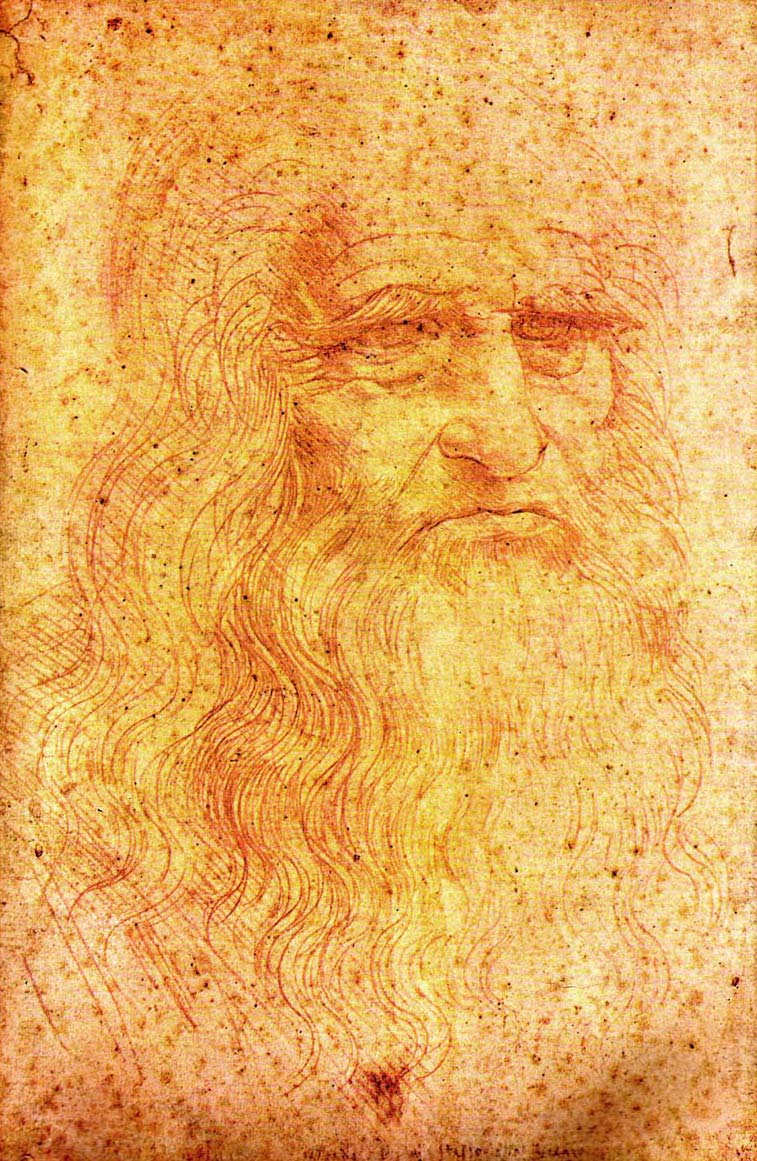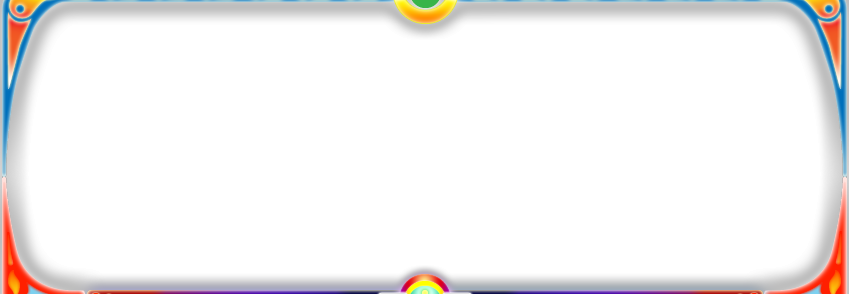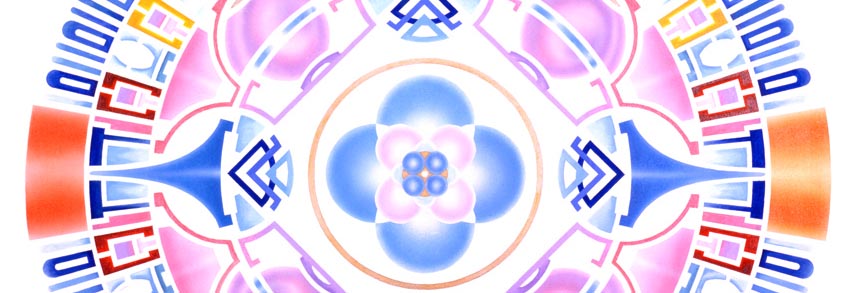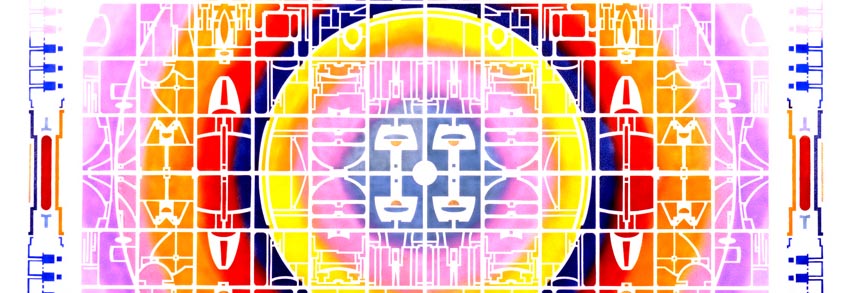 |
Being a Global Renaissance Human |  |
The 7 Principles of Leonardo Da Vinci
Quick notes towards a product/project/proposal
Being a Renaissance Human in the 21st century:
a Self-Education Program applying Seven Sacred Principles.

What is a Renaissance Man / Woman?
In the westernized global culture, a 'Renaissance Man/Woman' is a person who is familiar with many different areas of knowledge and wisdom. The term polymath is a synonym for Renaissance Man (Greek: πολυμαθής, polymathēs, "having learned much"). A Renaissance Human is thus a person who can draw upon a variety of fields of information or expertise (sciences as well as arts, crafts as well as wisdom) to gain a larger understanding of themselves, of a situation or the best solution to specific challenges.
Historically, the term is often used to describe great thinkers and artists of the Renaissance age who excelled at several fields in science and the arts, Leonardo da Vinci (1452 - 1519) being the outstanding example. "In the Italian Renaissance, the idea of the polymath was expressed by Leon Battista Alberti (1404–1472), in the statement that 'a man can do all things if he will'. Embodying a basic tenet of Renaissance humanism that humans are limitless in their capacity for development, the concept led to the notion that people should embrace all knowledge and develop their capacities as fully as possible." (Wikipedia)
Albert Einstein or James lovelock are often cited as contemporary examples.
NOW THE REAL QUESTION: is a Renaissance person the ultimate achievement of human life? The answer is an emphatic NO! Why, you may ask?
Being knowledgeable in all fields of human knowledge - supposing this is even possible nowadays - is only a tiny fragment of the infinite evolutionary potential of human consciousnee and humanity. Consider the ultimate achievement in the Eastern cultures: ENLIGHTENMENT - which a total letting go of the very idea of achievement and of the ego of the achiever. In fact the enlightenment traditions consider the human mind and its endless games as an obstacle to even glimpsing states of higher, pure consciousness. All yogas are practices to bring about the cessation of the fluctuations of the mind ("monkey mind"): they are techniques to let go of the wide-spread contemporary addiction to the human ego-mind and to the "half-job" of being exclusively outwardly oriented in our perceptions, thoughts and actions while completely ignoring the other half (if not the other 99%): the inner dimensions of consciousness.
See the new page on Enlightenment IF you still strive to become a polymathic Renaissance Man/Woman - and be recognized as such in your own mind and the cultured minds of others. And so it appears that a radical choice might have to be made between being a Renaissance person and flowering into enlightenment. This is true for most and maybe just about all of us...
But It is not necessarily so: Osho (Baghwan Rajneesh) was a fully enlightened polymath Renaissance man, an extraordinary example of the unfolding possibilities of consciousness in humanity. While an outstanding intellect (a maverick academic defeating opponents all over India in debating contests - and having screened 100,000 books through his photographic memory), he also entered enlightenment at the age of 21, spending the rest of his short life of 59 years to transmit and explain the un-explainable (in over 600 books of spontaneous discourses / darshans and the shakti of his buddha-field). In his extraordinary life and through the global impact of the communes of Poona and Rahneeshpuram (in Oregon), Osho inspired millions to go beyond all estabished spiritual systems & religions and enact directly the famous yoga advocated by the Buddha on his death bed: "Apo Dheepo Bhava" - "Be a Light unto Yourself! Nobody else can give it to you!"
In this article, we are focusing on the Renaissance Man/Woman unfolding the potential of the human mind. The potential of consciousness as accessible by human beings and culminating in enlightement is a whole different evolutionry story, addressed on the page on Enlightenment.
What was the Renaissance ideal of Education?
Many notable polymaths lived during the Renaissance period, a cultural movement that spanned roughly the 14th through to the 17th century and that began in Italy in the late Middle Ages and later spread to the rest of Europe.
In Renaissance Italy, the concept of a polymath was expressed by one of its most accomplished representatives, Leon Battista Alberti (1404–1472), in the statement that "a man can do all things if he will." Embodying a basic tenet of Renaissance humanism that humans are limitless in their capacity for development, the concept led to the notion that people should embrace all knowledge and develop their capacities as fully as possible.
According to Wikipedia, "These polymaths had a rounded approach to education that reflected the ideals of the humanists of the time. A gentleman of that era was expected to speak several languages, play a musical instrument, write poetry, and so on, thus fulfilling the Renaissance ideal. The idea of a universal education was essential to achieving polymath ability, hence the word university was used to describe a seat of learning. At this time universities did not specialize in specific areas but rather trained students in a broad array of science, philosophy, and theology. This universal education gave them a grounding from which they could continue into apprenticeship toward becoming a Master of a specific field."
The Renaissance education was the blossoming of the classical education of the middle ages and antiquity which was based on a curriculum called the Seven Liberal Arts, comprising the Trivium (made up of language skills: grammar, logic, and rhetoric) followed by the Quadrivium (or four essential and interrelated subjects of arithmetic, geometry, music, and cosmology). The Quadrivium is often explained as the study of Numbers, Numbers in Space, Numbers in Time (musical harmony), and Numbers in Space-Time.
Why we need Global Renaissance Humans NOW
We are now entering a new Renaissance time, not localized in a single country or a continent but globalized to the entire planet and all of humanity. In this 21st century times of global communication, fast consciousness expansion and exponential growth of information, data and concerns, it is an essential priority to be able to enlarge our perspectives on all subjects and have a Global Renaissance viewpoint - so we can raise above the often narrow-minded point of view of the specialist who is, by definition, trained to ignore the larger or more universal view. A Global Renaissance Human is a informed generalist or universalist capable of a "bird's eye view" on any situation, project or policy - not because he is ignorant of the details but because he went through all the details himself and now can see the possibility of a higher, larger synthesis that will bring the best possible win-win solution for all parties involved and bring the most cooperative harmony on the largest scale.
The American Indians use the device of their Medicine Wheel to teach people how to walk into the mocassins of everybody involved in the circle - that is how to see and understand the personal perspective of each participant, as if standing in their own shoes. Then, and only then, is a person accepted as "wise", because they are like reborn after one turn of the spiral and thus enriched with the global or collective wisdom of all.
Nowadays, it is essential to be able to make decisions (personally and globally) that take into account all the directions around the Medicine Wheel of life & nature. It is essential to acquire, maintain and expand an encompassing awareness based on an extensive knowledge of the orchestra of life. A Global Renaissance Human functions on a meta-system level where it is possible to coordinate the disparate elements of sub-systems or previous fragmented approaches.
The Basic Principles of a Global Renaissance Human
As examplified by the life and work of da Vinci, we can point to basic approaches to learning that are best conducive to attain this ideal of the Renaissance education updated & adapted to our times. These approaches are choices of perception, thought and action leading to an optimum management of physical, emotional, psycho-mental, social and spiritual behavior.
Many revived ancient disciplines, arts and techniques as well as numerous new ways are now available to support an on-going and efficient training to become Global Renaissance Humans.
We give below a few pointers, as inspired by the life and spirit of Leonardo da Vinci.
(Da vinci quotes are in bold).
1. WONDER & CURIOSITY
Curiosity is basically openness to anything unknown or new. Wonder is the ability to be so much in the moment of here-now that anything appears as new or imbued with a unique newness. These two attitudes are related: curiosity leads to moments of quiet wonder and wonder calls for more curiosity and validates it.
It is a well known child development fact that exposing a young child to a great variety of new sensory inputs such as forms, colors, sounds (including languages and music) greatly enhances the ability of the child to grow up with an open minded attitude towards life, people and themselves. Da Vinci was described by biographers as having an "unquenchable curiosity".
The best wonder-and-curiosity teacher is Nature. Only nature is infinite enough to satisfy the infinite curiosity of a youngster (or a "renaissance" elder) and feed their sense of wonder. Contact (and renewed contact) with nature is the best classroom available to Global Renaissance Humans. Da Vinci himself spent much time devoted to a keen and penetrating observation of natural phenomena.
• For instance, he carefully noted that leaves were arranged in spiral patterns with a symmetry of five. - this is now the well established field of Phyllotaxy (or study of the geometric arrangement of the elements of a plant or tree) which has culminated in the discovery of the Growth Angle (137.5º, a cognate of the Golden Ratio).
• His depiction of spirals in flowers, in flowing water, in a woman's hair or ocean's waves are coming from a long and precise observation of nature - and are pointing to the current field of vortex physics as pioneered by Viktor Schauberger.
Keeping one's sense of curiosity and wonder alive is a test of consciousness. If things start to feel too familiar or even boring, it is a sign that you live in the past or the future via your mind and are disconnected from "living in Beauty". It is time to stop, shake yourself and find again harmony within - maybe by a visit to the garden or to wild nature... Returning to being a child again and again is a key to growth & continuous learning - then spontaneous laughter is always at hand...
Wonder and curiosity extend to the ability to let go of the fear and embrace the unknown or the unexpected and see them as opportunities and gifts opening new horizons.
"It should not be hard for you to stop sometimes
and look into the stains of wall, or ashes of a fire,
or clouds, or mud or like places
in which, if you consider them well, you may find really marvelous ideas".
2. RESPECT FOR LIFE
In his Lives of the Artists (1568), Giorgio Vasari recounts how Leonardo da Vinci was in the habit of purchasing caged birds in the marketplace, holding them in his hand for a moment, and then releasing them to their freedom. In this rough and insensitive times, da Vinci was one of the few men who could not bear to give pain to animals.
"The smallest feline is a masterpiece".
"As long as men massacre animals, they will kill each other.
the time will come when men such as I will look upon the murder of animals
as they now look upon the murder of men."
Da Vinci was extremely sensitive to suffering and cruelty. In a piece that has a prophetic overtone, he wrote about the "cruelty of man": "Creatures shall be seen upon the earth who will always be fighting one with another with very great losses and frequent deaths on either side. These shall set no bounds to their malice. By their fierce limbs a great number of the trees in the immense forests of the world shall be laid level to the ground..."
Let us remember than da Vinci was a contemporary of Machiavelli, the roughless Florentine politician who advised that the "ends" are justified by forceful "means".
And let us note that, in his personal life style, Da Vinci was a vegetarian, in a time when hunting was a glorious, manly prowess.
3. DIRECT EXPERIENCE
"I have dissected more than ten human bodies... It was necessary to proceed by stages with so many bodies as would render my knowledge complete". Thus explains da Vinci in his notebooks. He was always choosing to look at nature directly - not just through the mind but through a very sharp and trained eye. His eye was like a camera, capable of stopping a bird in flight and carefully note the position of the wing muscles. This requires the ability to be completely present and aware in the present, like a child oblivious of anything else but his current object of attention.
Da Vinci had made a choice between knowledge from direct experience and knowledge borrowed from the words of others. "He who has access to the fountain does not go to the water pot" peremptorily writes da Vinci in his notebooks.
"Wisdom is the daughter of experience"
"Experience is the mother of knowledge".
Da Vinci did not want to merely copy: he wanted to get to the very structure of life, the primordial blueprint. He was always searching for the simplest, primordial, rudimentary forces in man and nature. "Simplicity is the ultimate sophistication" notes da Vinci.
4. DIVERSITY IN INTERESTS
It is a well known child development fact that exposing a young child to a great variety of new sensory inputs such as forms, colors, sounds (including languages and music) greatly enhances the ability of the child to grow up with an open minded attitude towards life, people and themselves.
Never believe that you know anything and can safely settle there. Any fixed or stopped knowledge is dead and already behind the moving river of life. Throughout his entire life, Da Vinci kept excitedly exploring new horizons: painting & painting pigments, mechanical inventions, mathematics & geometry, the dynamics of bird flight, military engineering, theater props, human anatomy, hydraulics, optics... there is no subject he would stay away from. He even was a most talented musician. When he was in Milan, at the court of Ludovico Sforza, there is no project, trivial or grandiose, he would not offer to successfully accomplish - but he did abandon quite a few.
He was actually quite known for procrastinating or even abandoning projects because he had lost interest in them... and his curiosity had moved to another domain or study... He followed the call of his open mind always pointing to new subjects of interest. It seems that there was no field of knowledge or study that da Vinci didn't venture into. Because of this diversity in interests, da Vinci actually pioneered many new fields of conceptual or practical knowledge, sometimes way into the future, as some of his futuristic inventions prove.
Diversity in interests leads to a love for newness and always creating improvements or refinements, small or big. Never being satisfied with the status quo as handed down from the past or the just-acceptable, da Vinci constantly experimented with new painting techniques (creating the famous sfumato), new angles of drawing a human face, unusual poses in animals, new machines... Da Vinci had a passion for looking with wonder & curiosity into everything that came in his life, no matter how unimportant or even trivial.
"Life is pretty simple: you do some stuff.
Most fails. Some works.
You do more of what works.
If it works big, others quickly copy it.
Then you do something else.
The trick is doing something else."
5. TRUST YOUR FULL IMAGINATION
Imagination is the faculty to generate "images", that is 3D or holographic animation movies of just about anything. Quite a right-brain gift. It is built-in in every human but nowadays usually atrophies early in life, due to the over-prevalence of the left brain and its utilitarian skills and also due to a mistrust and mislabeling of imagination as "childish" and "fantasy-like". When imagination has been vilipended and shrunk to the trivial advice to "imagine yourself having a big bank account", it is generally too late to regain the rainbow magic of one's own true imagination.
Imagination is a magnificent faculty that has a holographic nature: it brings together many senses into a co-creative oneness, and breaks through dimensions of consciousness. Imagination can and will be cultivated in the future, specially if nurtured in early age, to become an uncanny tool of exploration and reality creation, with a scientific precision. It is then close to the psychic skill of clairvoyance. A fully opened imagination is the entrance to the psycho-spiritual inner vision and co-creation of the Third "Ajna" Eye.
Visualization techniques are now regaining interest. They are generally goal-oriented and thus lack the free exploration inherent in true imagination. But they are a start towards new yogas of visual perception that blur the now obsolete boundary between physical and energetic viewscapes.
Da Vinci belonged to the tribe of inventors, throughout the centuries, who were using their gift of clairvoyant imagination to mock-up, with their inner eye, a 3D draft of their artwork or invention and improve them to the level of maturity where their external birth & expression will be easy and readily functional. Other recent members of that tribe have been Nikola Tesla (the inventor of Alternating Current), Buckminster Fuller (the inventor of the geodesic dome), Donald Coxeter (the pioneer of 3D polyhedra mathematics) and Benoit Mandelbrot (the inventor of fractal mathematics).
"There are three classes of people:
those who SEE;
those who see when they are shown;
and those who do not see."
6. KNOWLEDGE OF THE HARMONIC PROPORTION
In 1509, "De Divina Proportione" (The Divine Proportion), by Luca Pacioli, was published in Venice. The subject was mathematical and artistic proportion, especially the mathematics of the Golden Ratio and its applications to geometry, visual art and architecture. Leonardo da Vinci drew 60 illustrations of the polyhedron solids, depicted in both skeletal and solid forms, while he lived with and took mathematics lessons from Pacioli. The clarity of the written material and the precision drawings of da Vinci turned the book into a manual that had a profound influence on the creative talents of the time. Many artists and architects became fluent in the harmonic proportions based on the Golden Ratio. Albrecht Dürer came all the way from Germany to meet with Pacioli around 1507.
Luca Pacioli (1445 - 1517) was an Italian Franciscan friar and the greatest mathematics and geometry teacher of his times. In 1497, he accepted an invitation from Duke Ludovico Sforza to work in Milan. There he met, collaborated with, lived with, and taught mathematics to Leonardo da Vinci. In 1499, Pacioli and Leonardo were forced to flee Milan when Louis XII of France seized the city and drove out their patron. After briefs sojourns in Mantua and Venice, both friends settled in Florence. The last work by Pacioli (De Viribus Quantitatis - The Powers of Numbers) was a collaborative project between him and Leonardo da Vinci who entertains in his own notes some of the problems in De Viribus.
The long friendship, cohabitation and travels shared by the two men instilled into da Vinci's awareness and work the same definite sense of harmonic proportion and beauty he already knew from his observation of nature. Some of da Vinci paintings show this knowledge of a harmonic canon of beauty applied with subtle intuition.
Harmony is an expression of wholeness, of functioning as a whole being. Harmony means the proper balance between the polarities of life and nature, within and without. Learning that balance and wholeness is a delicate art that can never be imported from outside but matures into wisdom through the journey of life. It can only be successfully upheld in the circumstances of daily life by those who have mastered it within themselves: right-left brain whole thinking, mind-heart communion, the joy of being happy for no reason and the bliss of knowing that everything is perfect...
"Go some distance away, because the work appears smaller
and more of it can be taken in at a glance,
and a lack of harmony or proportion is more readily seen".
7. TRUE KNOWLEDGE PROCEEDS FROM SPIRIT
True artists, poets, scientists and inventors of all kinds have always, when inclined to humbleness, recognized that their artwork, model, poem or theorem came from the beyond rather than from their mere personality or individual mind. Below are quotes by da Vinci showing his understanding that human life and creativity are inscribed in a much greater reality:
"Learn how to see. Realize that everything connects with everything else."
"Where the spirit does not work with the hand, there is no art".
"The painter has the universe in his mind and hand".
"I awoke, only to find that the rest of the world is still asleep."
"Nature is full of infinite causes that have never occurred in experience".
"Once you have tasted flight,
you will forever walk the earth with your eyes turned skyward,
for there you have been
and there you will always long to return."
*
How would you like to become a Global Renaissance Human?
Try dancing your life as if you are
in front of an infinite fractal mirror...









